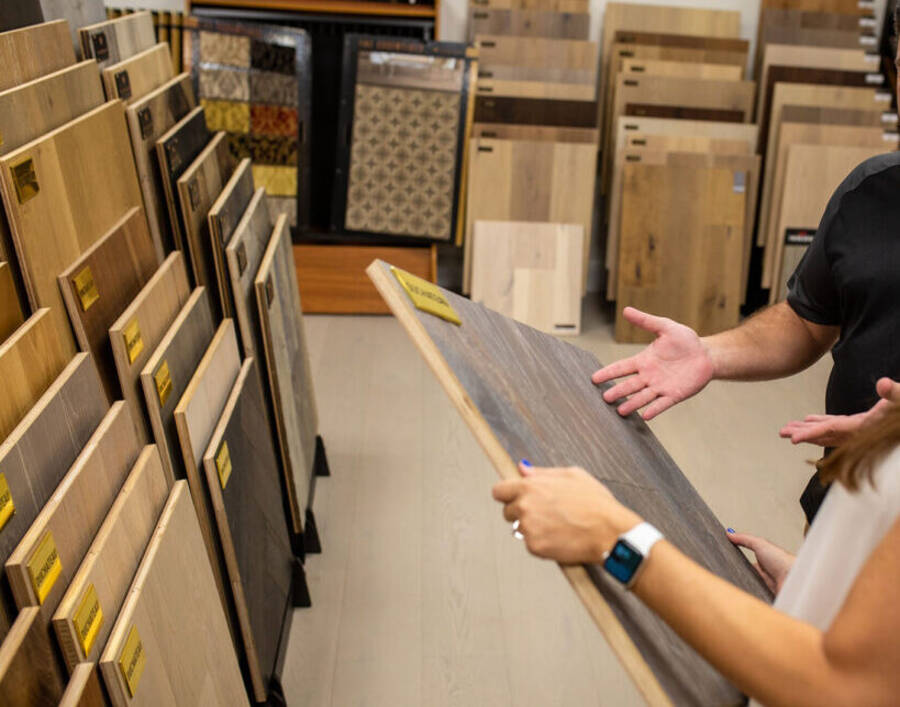As sustainability continues to shape our lifestyles, homeowners are increasingly seeking eco-friendly alternatives for home design, particularly when it comes to flooring. Choosing the right flooring can make a big difference in the environmental impact of your home, and there are plenty of sustainable options that don’t sacrifice style, durability, or comfort.
In this article, we’ll explore some of the best eco-friendly flooring options for different rooms in your home, considering both aesthetic and functional needs.
1. Bamboo: A Durable and Stylish Alternative for Living Rooms
Bamboo is often hailed as one of the most sustainable flooring materials available. Though technically a grass, it has the appearance and strength of hardwood, making it an ideal option for high-traffic areas like living rooms. Bamboo grows much faster than traditional wood, often taking just a few years to reach maturity, which makes it a more sustainable choice.
Why Bamboo Works:
- Sustainability: Bamboo is rapidly renewable, requiring fewer resources to grow than traditional hardwood.
- Durability: When properly harvested and treated, bamboo flooring is incredibly tough, often harder than oak or maple.
- Aesthetic Appeal: Its natural grain and light finish provide a clean, modern look that works well in both contemporary and traditional homes.
2. Cork: The Perfect Choice for Bedrooms
Cork is another eco-friendly material, ideal for spaces like bedrooms where comfort and warmth are essential. It’s harvested from the bark of the cork oak tree, which regenerates every few years, making cork a renewable resource. In addition to being soft underfoot, cork flooring offers natural insulation, keeping your room cozy and energy-efficient.
Why Cork Works:
- Comfort: Cork is naturally soft and springy, making it comfortable to walk on, especially in areas where you spend a lot of time barefoot, like bedrooms
- Thermal Insulation: Cork is an excellent insulator, helping maintain room temperatures, which is perfect for the cozy ambiance of a bedroom.
- Soundproofing: Cork absorbs sound, providing a quiet, peaceful environment—ideal for restful sleep.
3. Carpet Tiles: Modular and Sustainable Flooring for Home Offices
Carpet tiles are a versatile and sustainable choice for home offices or other creative spaces. Unlike traditional carpeting, carpet tiles are easy to install, and can be replaced if they get stained or damaged, reducing waste. Some of the terracotta tile collection by Clé are made from recycled materials, including plastic bottles, making them an eco-friendly option.
Why Carpet Tiles Work:
- Modularity: Damaged or stained sections can be replaced without the need to redo the entire floor.
- Recyclability: Many carpet tiles are made from recycled materials, contributing to a circular economy.
- Comfort: Carpet tiles provide a soft, warm surface that is perfect for spaces where you want to work or relax.
4. Reclaimed Wood: Rustic Charm for Dining Rooms
If you’re looking for a flooring option that combines sustainability with character, reclaimed wood is the perfect choice. Reclaimed wood is sourced from old barns, factories, and warehouses, giving the material new life in your home. Its unique, rustic appearance makes it ideal for dining rooms, where you want to create a warm, inviting atmosphere for gatherings.
Why Reclaimed Wood Works:
- Sustainability: Reusing existing wood reduces the demand for new lumber, preventing deforestation and reducing waste.
- Unique Aesthetics: No two reclaimed wood floors are the same. The natural wear and age of the wood add charm and history to your space.
- Durability: Often made from old-growth wood, reclaimed wood is typically more durable than modern, fast-growth lumber, making it a long-lasting option for high-traffic dining areas.
5. Natural Stone: A Timeless and Eco-Friendly Option for Kitchens
Natural stone, such as slate, limestone, and granite, has long been favored for kitchen flooring. These materials are highly durable and can last a lifetime, making them a sustainable choice for homeowners who want long-term flooring solutions. Natural stone is also non-toxic, allergen-free, and naturally cool, making it perfect for kitchens where cooking generates heat.
Why Natural Stone Works:
• Longevity: Natural stone can last for decades, making it a sustainable choice that won’t need to be replaced frequently.
• Non-Toxic: Stone floors don’t emit harmful VOCs (volatile organic compounds), improving indoor air quality in your home.
• Aesthetic Versatility: Stone offers a timeless, natural beauty that enhances the aesthetic appeal of any kitchen, from rustic to modern.
6. Linoleum: An Eco-Friendly Alternative for Bathrooms
Linoleum, often confused with vinyl, is a sustainable flooring option made from natural materials like linseed oil, cork dust, and wood flour. It’s highly resistant to moisture, making it a practical choice for bathrooms, where water exposure is a constant concern. Additionally, linoleum is biodegradable and can be recycled, making it one of the most eco-friendly flooring materials.
Why Linoleum Works:
- Water Resistance: Linoleum is naturally water-resistant, making it a perfect fit for wet environments like bathrooms.
- Low Maintenance: Easy to clean and maintain, linoleum is ideal for spaces that require frequent upkeep.
- Sustainability: Made from renewable materials, linoleum is one of the most eco-conscious choices for flooring.
Final Thoughts
Choosing eco-friendly flooring for your home not only supports sustainable living but also provides you with high-quality, stylish, and durable options. From bamboo in the living room to cork in the bedroom, or reclaimed wood in the dining area, sustainable flooring can transform your home without compromising on aesthetics or functionality. By selecting materials that are renewable, recyclable, and long-lasting, you’re making a positive impact on both your home environment and the planet.

